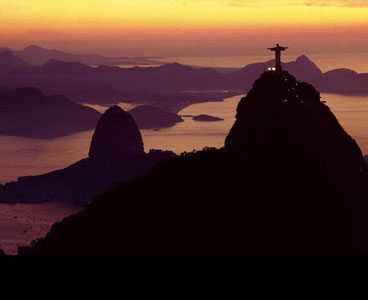
Guanabara Bay : One of the 7 Natural Wonders of the World
At the beginning of the 16th century, the Portuguese explorers who sailed down Brazil's coast kept tarck of their discoveries, and the days of the year, by naming the former for the latter. On New Year's Day, 1502, they glided toward a narrow opening in the coastline, guarded by fabulously shaped mountains. Beyond this entrance lay a body of water stretching 20 miles inland. Convinced that they had reached the mouth of a great river, they named the area River of the First of January.
The large waterway was not a river; it was an island-studded bay that the Tamoio people had long before named Guanabara - "arm of the sea." Nearly five centuries later, both the native and European names persist. But now, instead of caravels and dugouts, supertankers and yachts glide across the magnificent balloon-shaped harbor of Guanabara Bay. No longer a tropical wilderness teeming with tapirs and jaguars, the bay's western shores now hold a roaring metropolis called Rio de Janeiro - the River of January.
Guarding the entrance to the bay, the naked and lopsided mountain the Portuguese called Pao de Acucar evoked the sugarloaves fashioned on the island of Madeira. They called the highest mountain Corcovado - "the hunchback" - for its humped profile. Today, a statue of Christ the Redeemer crowns the 2,300-foot-high peak.